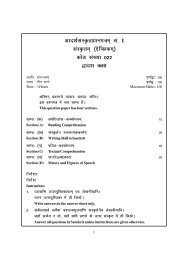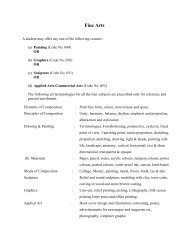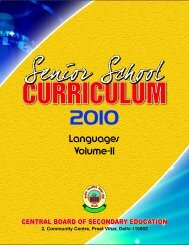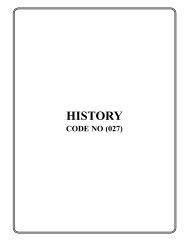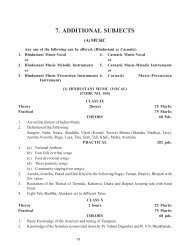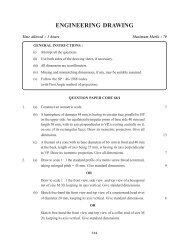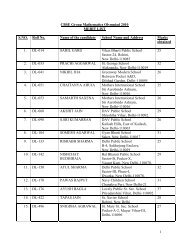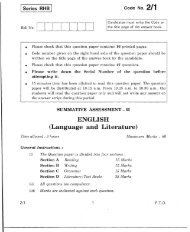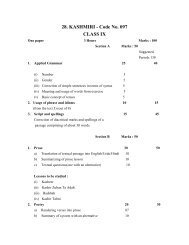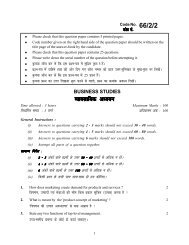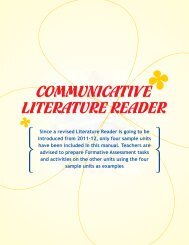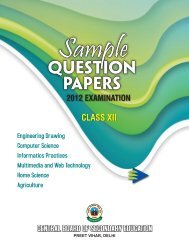A Text Book on Engineering Graphics - Central Board of Secondary ...
A Text Book on Engineering Graphics - Central Board of Secondary ...
A Text Book on Engineering Graphics - Central Board of Secondary ...
Create successful ePaper yourself
Turn your PDF publications into a flip-book with our unique Google optimized e-Paper software.
CHAPTER4<br />
All <strong>of</strong> you have seen a tractor and its trolley/ trailer. The trolley can be easily joined or removed<br />
from the tractor as per the need. Have you ever noticed that how this trolley is joined or detached<br />
from the tractor? This work is made so simple by a joint between the tractor and the trolley using<br />
a pin or a cotter. A fork end is there at the back <strong>of</strong> the tractor and an eye end is there in fr<strong>on</strong>t <strong>of</strong> the<br />
trolley and a round rod is inserted in between these two to make the joint. In industry also<br />
different cotter joints are used some <strong>of</strong> these we shall learn in the following paragraphs. First <strong>of</strong><br />
all we shall learn about the cotter.<br />
COTTER:<br />
Fig 4.1<br />
ROD JOINTS<br />
A cotter is a flat rectangular cross secti<strong>on</strong> wedge-shaped piece or bar <strong>of</strong> mild steel block which is<br />
uniform in thickness but tapering in width <strong>on</strong> <strong>on</strong>e side in general. It is used to c<strong>on</strong>nect rigidly two<br />
rods, whose axes are collinear and which transmit moti<strong>on</strong> in the axial directi<strong>on</strong> (tensile or<br />
compressive forces) without rotati<strong>on</strong>. The cotter is inserted perpendicular to the axes <strong>of</strong> the<br />
shafts which are subjected to tensile forces. Cotter provides rigid joint support.<br />
108 ENGINEERING GRAPHICS



